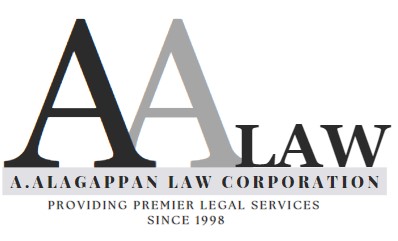
Commercial & Civil Litigation
CIVIL LITIGATION
1.
Letter of Demand
1.1 The Claimant’s solicitors will issue a
Letter of Demand to the potential Defendant with the details of the claim and
the amount claimed. The Letter of Demand
will state that the Claimant will commence legal action against the potential
Defendant if the claim-amount is not paid within the stipulated period.
2.
Starting a civil action
2.1 A
civil action begins by filing a claim document called an originating process. This process can be by a Writ of Summons
or originating summons.
2.2 The most common example is the Writ of Summons. This
Writ of Summons is filed as a suit in the District Court or Magistrate's Court depending on the amount of the claim.
|
MC
Suit |
Claim
is $60,000 or less |
|
DC
Suit |
Claim
is more than $60,000, up to $250,000. |
|
High
Court |
Claim is more than $250,000, unless
Plaintiff and Defendant agree in writing to have the matter heard by DC. |
2.3 A
Plaintiff (party making the claim) must file and serve the Writ on a Defendant
(party against whom the claim is made).
2.4 The
District Court hears civil actions where the disputed amount does not exceed $250,000. Parties may also agree
in writing to have the matter heard by the District Court, even though the sum in dispute exceeds
$250,000. Where the plaintiff limits his claim to $250,000, the District Court
can also hear the case.
2.5 The Magistrate's Court has the power to hear civil actions where the disputed amount does not exceed $60,000.
3.
Service of
Writ
3.1 After
the Writ of Summons is issued, the party making a claim (Plaintiff) must serve the writ on the party against whom he is
claiming (Defendant).
3.2 The Plaintiff may ask a lawyer or a lawyer’s clerk for process server to personally serve the writ.
3.3 In the event two (2)
attempts of personal service are unsuccessful, the Plaintiff may apply to Court for “substituted service” (e.g. to put
the document on the door of the Defendant’s home to inform the Defendant).
Defending A Claim
4.
Memorandum of
Appearance
4.1 If
a Defendant wishes to contest the claim in the Writ, he must file a Memorandum of Appearance (MOA) within 8 days after receiving the Writ.
4.2 If the Defendant does not wish to contest
the claim, he can follow the instructions in the Writ, e.g. pay the
Plaintiff. This would minimize the legal
costs he has to pay to the Plaintiff in comparison to if he contested the
claim.
5. Defence/Counterclaim
5.1 If
a Defendant wishes to contest the claim, he must file his Defence in Court and
serve a copy of his Defence on the Plaintiff within 22 days from the date of service of the Writ.
5.2 If
a Defendant thinks that he has any claim against the Plaintiff, he may make a Counterclaim
in the same action brought by the Plaintiff.
5.3
In
such a case, the Defendant will be filing a Defence and Counterclaim.
6.
Reply and Defence to Counterclaim
6.1 A Plaintiff
may serve his response on the Defendant within
14 days after the Defence (and Counterclaim) has been served
on him. This is known as the reply to the Defendant
(and Defence to a Counterclaim, if there is one).
Upfront Disclosure
7.
List
of Documents
7.1 In legal proceedings, disclosure or discovery is the process to make available evidence that is relevant to the case to the other party.
For MC cases, disclosure must be done upfront through a List of Documents.
When a party files and serves
a Pleading, he must also file and serve a List of Documents in the format set out in Form 234 of the Rules of Court.
• A Pleading is a legal document
filed in a writ action in which a party formally sets out the facts supporting
his case. Some examples are: Statement of Claim, Defence, Defence and
Counterclaim, Reply.
• A List of
Documents must set out the documents that a party has which are relevant to the
case. It will include documents that
support his case or the
other party's case, for example,
a contract or loan agreement, and letters exchanged
between the parties before the dispute arose.
Default
Judgments
Paragraphs 7 to 11 apply to default
judgments, i.e. where there has been either a failure to file an MOA or Defence. If there
is no such default, refer
to paragraph 11 on the next step(s).
8. Judgment
in Default of Appearance
8.1 If a Defendant fails to file the MOA within the time limit, the Plaintiff may enter
a judgment against him.
9. Judgment
in Default of Defence
9.1
If the Defendant has been
served the Writ and filed the MOA,
but does not file and serve any Defence within the time limit,
the Plaintiff may apply to the Court for judgment to be entered against him.
10. Final Judgment
10.1 A judgment in default may be a final judgment, for example, to pay the Plaintiff an amount of money, interest on
the amount and legal costs.
11. Interlocutory Judgment
11.1 A judgment in default which is not for a fixed amount of money may be an interlocutory
judgment. In this case, there will be an assessment
of damages hearing fixed, where the amount
of money, interest, and legal costs payable to
the Plaintiff will be determined by the Court.
12. Setting Aside Default Judgments
12.1 The Defendant may apply to the Court to set aside or vary such a judgment as the Court thinks just.
Pre-Trial Processes
13.
Case Management
Conference (CMC)
13.1
If a Defence is filed,
the Court will notify parties
to attend a CMC. A CMC is conducted for cases which do not fall in
the non-injury motor accident ("NIMA") or personal injury
("PI") categories.
13.2
Parties are
encouraged to negotiate before coming to the CMC. They should be able to do
so as they would know the strengths and weaknesses of each other’s case through the upfront disclosure of relevant documents to the other
party.
13.3
Before attending
the CMC, each party must file:
13.4
Form
3 - List
of Issues in Dispute
and List of Witnesses. This will inform the Court and the other party of the areas
of dispute and the witnesses that will be called to give evidence in support of his case.
13.5
Form 7 - ADR
Form. This will inform the Court and the other party of which Alternative
Dispute Resolution option he prefers to help resolve the case.
At the CMC:
§ The Court
will assist parties to
narrow the issues, deal with any interlocutory matters (namely matters of procedure that
each party must deal with to prepare their
case) as well as consider all available options with the parties for
resolution of the case.
§ The Court may also direct parties to mediation or any
other ADR option if the Court is
of the view that doing so will help to resolve the case.
•
If the case cannot be resolved without
a trial, the Court will
give directions for trial.
14.
Alternate Dispute Resolution
14.1
Trials are not the only way to resolve
a dispute. The State Courts encourage all parties
to explore alternative processes which may be more suitable for them.
14.2
Parties can consider the following Alternative
Dispute Resolution (ADR) options listed below. For more information,
please refer to www.statecourts. gov.sg (interested in mediation/ADR).
•
Mediation -This is a process in which a neutral third party; i.e. a mediator, facilitates
and guides
the parties in negotiating a mutually
acceptable settlement to
their dispute.
The mediator
does not
determine who is at fault in the
dispute. Instead, he helps the parties to focus
on finding
solutions that meet their
concerns, without forcing a decision
on either party. Mediation
is the most common
option chosen by parties.
It is fast and helps to preserve relationships. Mediation is a service provided
by the State Courts
Centre for Dispute Resolution (SCCDR)
and the
Singapore Mediation Centre. In the SCCDR, mediation
is free for Magistrates Court claims, while a fee of $250 per party
is charged for District
Court
claims (from 1 May 2015 onwards).
•
Neutral Evaluation - Neutral Evaluation is conducted by a neutral
third party; i.e. an
evaluator, who will review the case and provide an early assessment of the
merits of the case. During Neutral Evaluation,
the parties, with their respective lawyers, will present their case and the key evidence
to the evaluator. The evaluator will then provide his best estimate of the parties' likelihood of success at
trial. Neutral Evaluation is a service provided
by the SCCDR where a judge will be your evaluator. Neutral Evaluation is also free for Magistrates Court claims, while a fee of
$250 per party is charged for
District Court claims (from 1 May 2015 onwards).
•
Arbitration - This is a process where parties agree to resolve the dispute
by bringing the matter before a neutral third party; i.e. an arbitrator, for decision.
During an arbitration hearing, both parties, with their respective lawyers,
will present their case to the arbitrator. The arbitrator will make a binding
decision based on the merits of the
case, i.e. the parties must obey the arbitrators decision. The Law Society of
Singapore provides low-cost arbitration
services through the Law Society Arbitration Scheme (LSAS).
15.
Setting Down
15.1 If the case cannot be settled, the CMC Judge
will give directions to the parties to prepare for trial and fix the
trial date.
The
CMC Judge may give directions to the parties
for, e.g.
15.2 Inspection -
To look at the original documents
in the Llst of Documents and make copies to prepare your case.
15.3 Exchange of Affidavits of Evidence-in-Chief (AEIC) - The preparation and exchange of witness statements under oath (or AEICs)
which each party is relying
on, and any objections to such statements.
15.4 Number of Witnesses -The number of witnesses a party may require and the number of days a trial may require.
15.5 Other Matters
- Other matters such as specific evidence
by expert advice or photographs to be used in trial.
16.
Simplified Trial
16.1
Once all the pre-trial matters to support a party's case have been dealt with, the CMC Judge will fix the trial date.
16.2
Most cases will be simplified trials with a short hearing
to save time and costs for the parties.
Trial &
Post-Trial Processes
17.
Trial
At the trial,
both parties will take turns to present their case to the Judge. Generally, the process is:
•
Opening statements - Setting out the parties'
case as to the facts and the law.
• Presentation of evidence - Calling witnesses to give evidence.
•
Closing submissions - Summarising the trial evidence and
reasons why the Court should rule in favour of a party.
18.
Judgment
A judgment is the decision of the Court at the end of a trial. The Court may give judgment immediately after listening to the closing submissions or adjourn to take more time to consider the case. The parties will be told when to return to Court for the delivery of judgment.
19.
Assessment of Damages
In certain cases, e.g. personal injury claims, a Judge may grant judgment on the issue of liability but not make a ruling on the precise amount of money to be paid to the successful party.
In such a case, the amount of money (or quantum of damages) to be awarded is assessed by the Court at a later hearing, after hearing evidence from relevant parties, such as the injured Plaintiff or medical experts.
Appeal Processes
20.
Appeal to District Judge in Chambers
20.1
Parties appearing
in Court for hearings may have their case
heard by a Deputy Registrar or a Magistrate or District Judge.
20.2 If the case is heard
by a Deputy Registrar, a party who is not satisfied
with the judgment, order or decision may file
an appeal to a District Judge within 14 days of the judgment, order or
decision and the Appeal will be heard by a District Judge in chambers.
20.3
No permission
from the Court is needed
to file such an appeal.
21.
Appeal to High Court Judge
in Chambers
21.1
A party who is not satisfied
with the judgment, order or decision made by a District Judge in
chambers, may file an appeal to a High Court Judge in chambers within 14 days of the judgment.
21.2
Permission of the Court to appeal is required
if the amount in dispute or the value
of the subject-matter does not
exceed $50,000.
22.
Appeal to High Court
after Trial
22.1
After a trial court hearing, a party who is not satisfied with the judgment may file an appeal
within 14 days from the delivery of
the judgment.
22.2 Permission of the Court to appeal is required
if the amount in dispute or the value
of the subject-matter does not
exceed $50,000.
23.
Pre-Enforcement
23.1
Examination of Judgment Debtor
• A judgment debtor (Debtor) is the party that is ordered by the Court to paymoney to another party, the judgment creditor (Creditor).• If a judgment debt remains unpaid, the Debtor may be summoned to attend Court to provide answers to questions and provide documents as to his money or property, for the Creditor to decide on the mode of enforcement to recover the judgment debt.• Such information for individuals may include recent bank statements, payslips, income tax returns, CPF statements, investment statements, insurance policies, vehicle log book and hire purchase• agreement, lease agreements and title deeds.
24.
Enforcement Processes
24.1
Writ of Execution
• To enforce payment by a Debtor, a Creditor may apply for a Writ of Execution,
e.g. Writ of Seizure and Sale (WSS) of movable and immovable property, Writ of Delivery and Writ of Distress.
• A WSS authorises the Court Bailiffs
to enter the Debtor's
home to identify
and affix a seal on ("seize") the Debtor's furniture and arrange an auction
sale of the property. The proceeds of the
sale will be used to pay the judgment debt (after deducting the execution costs and the Bailiff
expenses).
•
A party who claims that the seized items belong to him and not the Debtor may
apply to Court for the Court to decide who the rightful owner of these items is.
24.2
Garnishee Proceedings
o A Creditor who knows the source of income of the Debtor may use garnishee proceedings to recover the sum owed to him by the Debtor from a third
party (Garnishee).
This method
of enforcement changes the Garnishees obligation to pay money to the Debtor into an
obligation to pay the Creditor.
o For example, the Creditor may apply to Court to order a
bank (Garnishee) to pay
the money in the Debtors
bank account to the Creditor. The Creditor and Garnishee may require the Debtor to
pay the legal costs for the application.
Adopted
from State Courts, Singapore
Updated
on 13 May 2016

